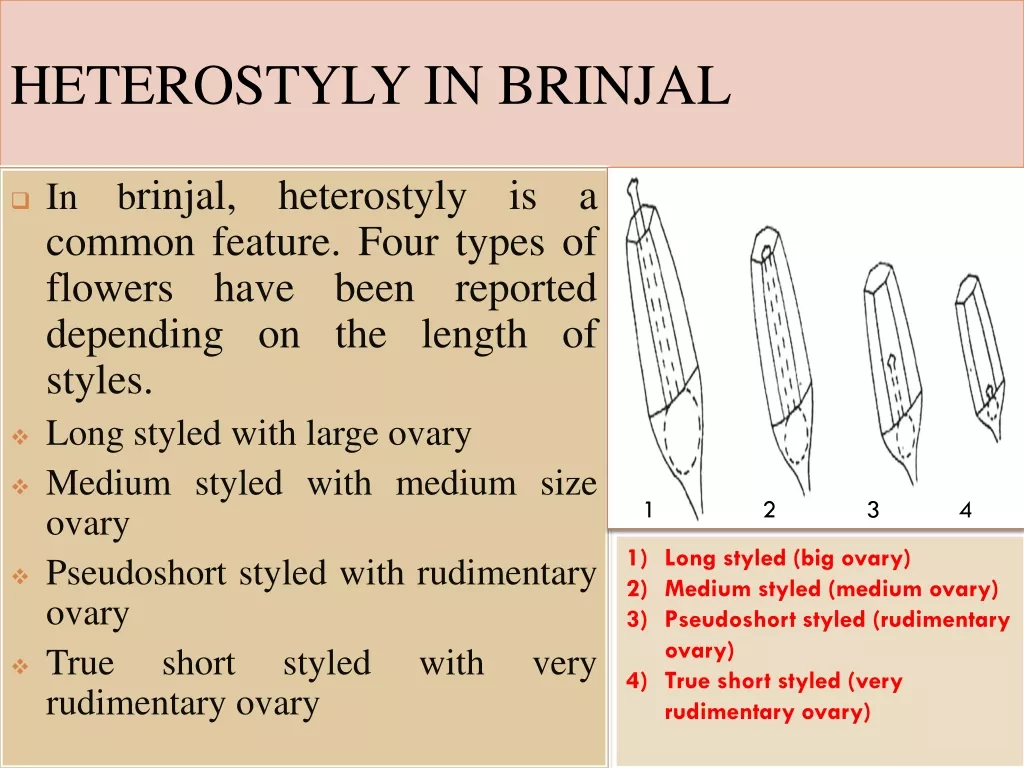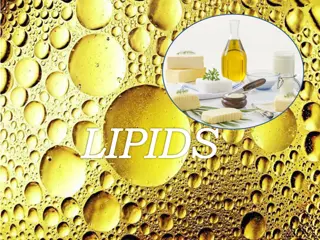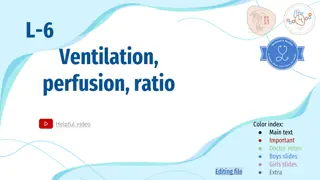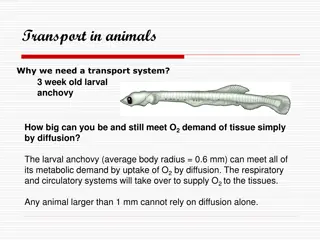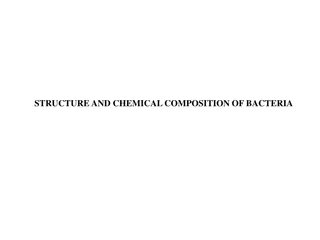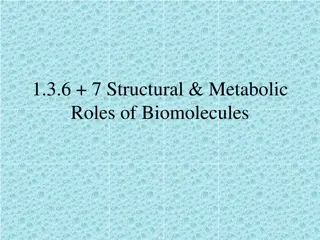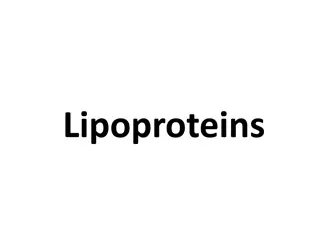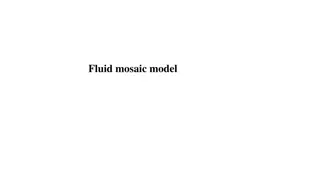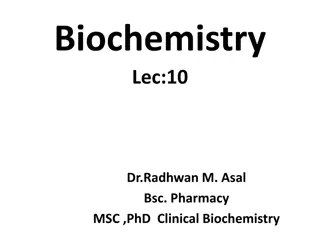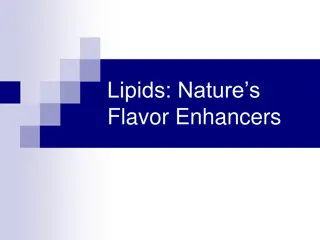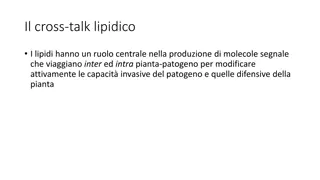
Functions and Importance of Phospholipids in Physiology
Explore the diverse roles of phospholipids in biological systems, from membrane structure and signaling to lung surfactant and bile composition. Understand the significance of glycerophospholipids and sphingo-phospholipids, and their relevance in various physiological processes. Discover the complexity of lipid compounds and their essential functions in the body.
Download Presentation

Please find below an Image/Link to download the presentation.
The content on the website is provided AS IS for your information and personal use only. It may not be sold, licensed, or shared on other websites without obtaining consent from the author. If you encounter any issues during the download, it is possible that the publisher has removed the file from their server.
You are allowed to download the files provided on this website for personal or commercial use, subject to the condition that they are used lawfully. All files are the property of their respective owners.
The content on the website is provided AS IS for your information and personal use only. It may not be sold, licensed, or shared on other websites without obtaining consent from the author.
E N D
Presentation Transcript
Phospholipid Compounds of Phospholipid Compounds of Physiological Importance Physiological Importance By Amr S. Moustafa, M.D.; Ph.D. Amr S. Moustafa, M.D.; Ph.D.
Objectives Objectives Selected members of phospholipids Physiological importance of phospholipids Plospholipases: Phospholipases A1, A2, C and D Lysosomal phospholipase: Sphingomyelinase
Functions of Phospholipids Functions of Phospholipids (A)Membrane-bound phospholipids: Structural: Predominant lipids of cell membranes Anchoring: Attaching some proteins to membranes Signaling: Source of PI3 and DAG Myelin sheath: insulator and speeds up transmission of nerve impulses
Functions of Phospholipids Functions of Phospholipids CONT D (B) Non-membrane-bound phospholipids: Easy re-inflation of alveoli by air: Lung surfactant Detergent effect: Essential component of bile Solubilize cholesterol, preventing gall stones Emulsifying lipids, helping lipid digestion Structural: Coat of lipoproteins
Background: Lipid Compounds Background: Lipid Compounds Heterogeneous group Relatively water-insoluble (? Exception) Soluble in non-polar solvents
Lipid Compounds: Heterogeneous Group A. Simple Lipids: Fatty acids Ketone bodies Triacylglycerol Cholesterol B. Complex Lipids: Phospho Phospholipids Lipoproteins Glycolipids lipids
Phospholipids Phospholipids A. Glycerophospholipids Glycerol-containing phospholipids Degraded and remodeled by phospholipases B. Sphingo-phospholipids: Sphingosine-containing phospholipids Degraded by lysosomal phospholipases (sphingomylinase)
Phospholipids Phospholipids A. Glycerophospholipids: 1. Phosphatidylcholine (Lecithin) e.g., Surfactant (Dipalmitoylecithin) 2. Phosphatidylinositol (Signaling and anchoring molecule)
Phospholipids: A. Glycerophospholipids Parent Compound Phosphatidic acid Members: 1. Phosphatidylcholine (Lecithin) e.g., Surfactant (Dipalmitoylecithin)
Phospholipids: A. Glycerophospholipids Phospholipids: A. Glycerophospholipids 1. Dipalmitoylecithin (Lung surfactant) Synthesis and secretion: by granular pneumocytes Major lipid component (65%) of lung surfactant (Remainining 35%: Other phospholipids, cholesterol & proteins) Surfactant decreases surface tension of fluid layer lining of alveoli, reducing the pressure needed for their inflation by air, and preventing alveolar collapse (atelectasis) Congenital Respiratory distress syndrome (RDS): Insufficient production of lung surfactant (especially in pre-term babies) neonatal death
Congenital Respiratory distress syndrome (RDS) Pre-natal diagnosis by: Lecithin/sphingomyelin (L/S) ratio in amniotic fluid Ratio of 2 or above indicates lung maturity and no RDS (i.e., shift from sphingomyelin to lecithin synthesis by pneumocytes that normally occurs by 32 weeks of gestatioin) Prevention: Glucocorticoids to the pregnant mother with low L/S ratio shortly before delivery Treatment: Intratracheal administration of surfactant to pre-term infants with RDS
Phospholipids: A. Glycerophospholipids Phospholipids: A. Glycerophospholipids 2. Phosphatidylinositol 4,5 bisphosphate (PI)
Calcium/Phosphatidylinositol System Diacylglycerol (DAG) Phospholipase C Inositol Trisphosphate (IP3)
Phosphatidylinositol System Signal: Hormones or neurotransmitters e.g., Acetylcholine, antidiuretic hormone (V1- receptor) and catecholamines ( 1 actions) Receptor: G-protein coupled receptor Effects: *Activation of phospholipase C Hydrolysis of phosphatidylinositol 4,5-bisphosphate Production of IP3 ( Ca2+) and DAG Activation of protein kinase C Phosphorylation of cellular proteins * Please refer to activation of adenylyl cyclase and guanylyl cyclase for production of second messengers in other G-protein coupled signaling pathways Response: Biological responses to hormones
* * Acetylcholine Antidiuretic hormone (ADH) Catecholamines Intracellular Signaling by Inositol trisphosphate
PI- Protein Anchoring Anchoring of proteins to membranes via Carbohydrate-Phosphatidylinositol Bridge Examples of anchored proteins: 1. Alkaline phosphatase (to the surface of small intestine) 2. Acetylcholine esterase (to postsynaptic membrane) These proteins can be cleaved from their attachment to the membranes by phospholipase C
Lipoprotein Structure Lipoprotein Structure Outer part (coat): Apoproteins or apolipoproteins Phospholipids Phospholipids (Why?) Free cholesterol (Relatively hydrophilic, allowing transport of lipid particles of the core in the aqueous plasma) Inner part (core): According to the type of lipoproteins Different lipid components in various combinations
HDL has the highest content of phospholipid (1) Different classes of lipoproteins include Chylomicrons, low density lipoproteins (LDL), high density lipoproteins (HDL), very low density lipoproteins (VLDL) (2) HDL has the highest content of phospholipid. Phosphatidylcholine (lecithin) acts as a source for fatty acid necessary for esterification of cholesterol on the surface of HDL by lecithin-cholesterol acyl transferase (LCAT/PCAT)
Phospholipases (1) For glycerophospholipids: Phospholipases A1, A2, C and D Present in all tissues and pancreatic juice Present in snake venoms and bacterial toxins (2) For sphingophospholipids: Lysosomal phospholipase (Sphingomyelinase)
Functions of Phospholipases (1) Degradation of phospholipids Production of second messengers Digestion of phospholipids by pancreatic juice Pathogenic bacteria degrade phospholipids of membranes and causing spread of infection (2) Remodeling of phospholipids: Specific phospholipase (A2) removes fatty acid from phospholipids Replacement of fatty acid by alternative fatty acid using fatty acyl CoA transferase e.g., Binding of 2 palmitic acids in: Dipalmitoylphosphatidylcholine (DPPC) Binding of arachidonic to carbon 2 of PI or PC
Take Home Message Take Home Message Phospholipidsare Complex lipids Phospholipidshave important physiological functions: A. Membrane-bound: Structural Signaling & anchoring: e.g., PI Myelin sheath: e.g., sphingomyelin B. Non-membrane bound: Structural: Lipoprotein coat Alveolar re-inflation: Lung surfactant Detergent effect: Phospholipids of bile
Take Home Message Take Home Message CONT D Phospholipases: Phospholipases A1, A2, C and D Lysosomal Phospholipase: Sphingomyelinase Function of phospholipases: Degradation of phospholipids e.g., production of second messengers Remodeling of phospholipids e.g., production of DPPC (lung surfactant)

